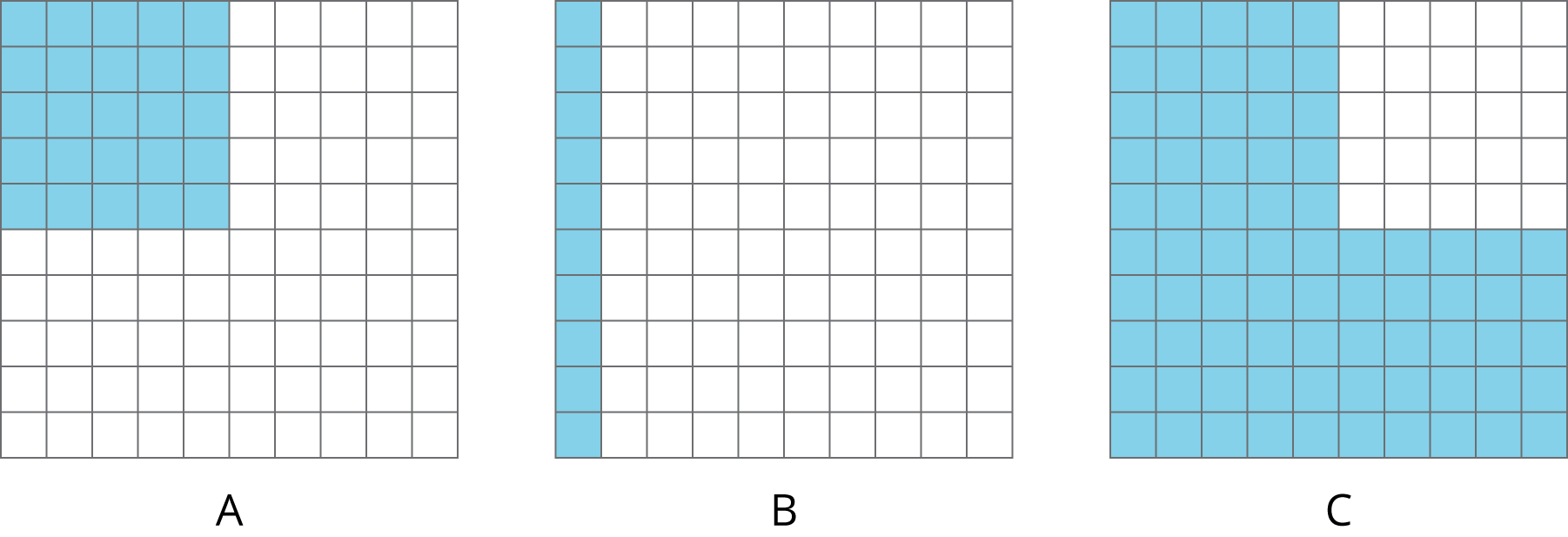9.1: Grid of 100
How much is shaded in each one?

Let's use unit rates like a pro.
How much is shaded in each one?

Your teacher will give you a set of cards showing different offers.
Next, split cards B–E so you and your partner each have two.
Time to make your own deal! Read the information on card F and then decide what you would charge if you were the clerk. When your teacher signals, trade cards with another group and decide whether or not you would take the other group’s offer.
Keep in mind that you may offer a fair deal or an unfair deal, but the goal is to set a price close enough to the value it should be that the group they cannot immediately tell if the deal you offer is a good one.
Wild animals from around the world wanted to hold an athletic competition, but no one would let them on an airplane. They decided to just measure how far each animal could sprint in one minute and send the results to you to decide the winner.
| animal | sprint distance | |
|---|---|---|
| row 1 | cougar | 1,408 yards |
| row 2 | antelope | 1 mile |
| row 3 | hare | 49,632 inches |
| row 4 | kangaroo | 1,073 meters |
| row 5 | ostrich | 1.15 kilometers |
| row 6 | coyote | 3,773 feet |
You look up the following information about converting units of length:
1 inch = 2.54 centimeters
Sometimes we can find and use more than one unit rate to solve a problem.
Suppose a grocery store is having a sale on shredded cheese. A small bag that holds 8 ounces is sold for $2. A large bag that holds 2 kilograms is sold for $16. How do you know which is a better deal?
Here are two different ways to solve this problem:
Compare dollars per kilogram.
The small bag holds \frac12 pound of cheese, because there are 16 ounces in 1 pound, and 8 \div 16 = \frac12.
The small bag costs $4 per pound, because 2 \div \frac12 = 4. This is about $8.80 per kilogram, because there are about 2.2 pounds in 1 kilogram, and 4.00 \boldcdot 2.2 = 8.80.
The large bag is a better deal, because it costs less money for the same amount of cheese.
Compare ounces per dollar.
The large bag holds 2,000 grams of cheese. There are 1,000 grams in 1 kilogram, and 2 \boldcdot 1,\!000 = 2,\!000. This means 125 grams per dollar, because 2,\!000 \div 16 = 125.
There are about 28.35 grams in 1 ounce, and 125 \div 28.35 \approx 4.4, so this is about 4.4 ounces per dollar.
The large bag is a better deal, because you get more cheese for the same amount of money.
Another way to solve the problem would be to compare the unit prices of each bag in dollars per ounce. Try it!